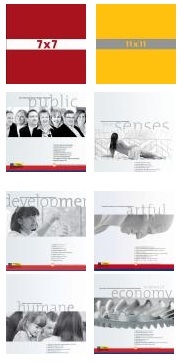English Information

This information is supposed to give you a short idea about our beautiful region BURGENLAND. Since the Austrian accession to the EU in 1995 Burgenland has started a unique catching-up process. Through wise use of EU funding possibilities within the different funding-programms Burgenland has succeeded in becoming a dynamic region – Facts & Figures and our statistic data proof the positiv development. Burgenland-Video
Hans Peter Doskozil, Regional Governor of Burgenland
Facts, Figures, Statistics & Brochures
Capital: Eisenstadt
Area: 3.962 km²
Population: 286.215 - Population density: 71
Official language and recognised minority languages:
German, Croatian, Hungarian, Romanes
Border: Hungary 356km, Slovakia 26km, Slovenia 15km
Highest point: Geschriebenstein (884 m)
GDP: 88% of the EU-27 average (2016)
Regional Government
Parties in the provincial assembly
- Social Democratic Party (SPÖ)
- Austrian People’s Party (ÖVP)
- Freedom Party (FPÖ)
- Green Party (Grüne)
- List Burgenland (Liste Burgenland)
Ruling Parties: SPÖ
Regional Govenor: Hans Peter Doskozil (SPÖ)
Statistics
- Graduate-Quotas
- Nr. of courses/students at the Univ. of Applied Sciences Burgenland – FH Burgenland- Research Burgenland
- Number of Employed People (1998-2015)
- Average Income (net) of Employed Persons
- Tourism: Nights from 1970 - 2015
- burgenland.info
- Households with Internet/Broadband

Please find a number of english brochures about EU-related activities in Burgenland - produced by the Regional Management Burgenland - rmb.at
- 7x7 - 7 Success Stories on 7 years of phasing out funding in Burgenland
- Case Study Folder: public projects within the EU-Region of Burgenland
- Research and Development in the EU Region Burgenland
- Humanity in the EU region Burgenland
- small, middle-sized and great enterprises in the European Region Burgenland in terms of economy
- artful - art and artful projects in the European Region Burgenland
- sensuous aspects of the european region burgenland for all senses.
- 11 x 11 - 11 success chapters on 11 years objective 1 in Burgenland
History
After the collapse of the Austrian-Hungarian monarchy Burgenland became in 1921 the youngest province of the Republic Austria. The crisis of the 1920s and 1930s effected the economically weakly developed province very severely and led after the German Anschluss of Austria to the division of the province. In 1945 the province of Burgenland was reestablished, but the war had hit it hard and Burgenland was occupied by Soviet forces.
The signing of the Austrian Independence Treaty in 1955 and the withdrawal of the Soviet troops started a promising economic recovery, even though the economic progress of Burgenland was due to the extreme geographical situation directly next to the Iron Curtain slower than in the other Austrian provinces.
In 1989 the fall of the Iron Curtain and the opening of the borders to the east created new chances for the province.
